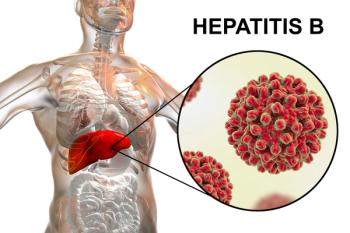
Unusual side effects of HIV drugs pose challenge
Updated studies show that the greater use of life-enhancing highly active antiretroviral therapy, the more reports proliferate of unusal side effects, including lipodystrophy, lactic acidosis, insulin resistance, and recently, male osteoporosis.
Dyslipidemia-elevations in triglycerides, LDL, and total cholesterol-is fast becoming commonplace in HIV patients, intensifying concerns about heart attacks and strokes in 30- to 40-year-olds. However, dyslipidemia in these patients has been treated successfully with standard diet modifications and oral drugs such as gemfibrozil and the statins. Also, the protease inhibitor (PI) atazanavir (Reyataz, Bristol-Myers Squibb) may cause less dyslipidemia than any other drug in its class.
Some new findings show that lipodystrophy seems to occur most frequently in patients who thrive on HAART; other data suggest that blood lipid levels normally return to baseline levels when patients stop taking certain nucleoside reverse transcriptase inhibitors (NRTIs), e.g., stavudine (Zerit, BMS), or quit taking all PIs. The third class of HIV drugs-the non-nucleoside reverse transcriptase inhibitors (NNRTIs)-is associ-ated with potentially deadly skin rashes, e.g., the Stevens-Johnson syndrome.
The pathophysiologic mechanisms of these changes are not well understood, according to James A. Jorgenson, R.Ph., M.S., director of pharmacy services, University of Utah Hospitals, Salt Lake City, and other investigators. He told Drug Topics, "Several potent new HIV drugs received accelerated Food & Drug Administration approval due to the critical need for these agents. The benefit for patients outweighed the risk associated with less testing prior to approval. As more patients continue to use these drugs, however, more side effects could reveal themselves."
Some investigators report both drug- and drug class-specific similarities and differences in the impact of antiretroviral drugs. For example, in a 2006 update of his report "Adverse Events of Antiretroviral Drugs" in HIVinSite, Ian McNicholl, Pharm.D., BCBS, pointed out: "Of the NRTIs, stavudine appears to convey the greatest risk of lipodystrophy and other mitochondrial toxicity.... When stavudine is combined with didanosine, there's also an increased risk of lactic acidosis ... and therefore pregnant women ... should avoid this combination. Additionally, studies link stavudine to the fat-depletion component of the HIV-associated lipodystrophy syndrome."
Christine Jamjian, Pharm.D., infectious disease/HIV pharmacist, University Health Care, University of Utah, said in an interview, "Several recent reports show that partial improvement in fat depletion occurred after HIV patients on HAART were switched from stavudine to zi-dovudine, abacavir (Ziagen, GlaxoSmithKine), or tenofovir (Viread, Gilead)." Further, Australian researchers note that patients taking combined PI and NRTI treatment develop fat depletion about twice as fast as with NRTI alone. Their data show, too, that the risk of lipodystrophy rises sharply with the duration of treatment with either of these drug classes or with combinations of them.
McNicholl said, "All PIs are associated with metabolic abnormalities, including dyslipidemia, hyperglycemia, and insulin resistance, as well as lipodystrophy. In addition, PIs may increase the risk of bleeding in hemophiliacs ... and [pharmacists should note] PIs may have significant interactions with other drugs ... which calls for dosage adjustments."
Using atazanavir as an example of the complexity of current drug therapy, McNicholl noted that proton pump inhibitors interfere with absorption and thus are contraindicated in patients receiving this PI. But "other antacids and H2 blockers also interfere with atazanavir absorption and should be used cautiously in patients receiving this approved antiretroviral.... To add to the difficulty of choosing the right drug, some studies show that atazanavir may have less effect on lipid levels than do other PIs."
Newsletter
Pharmacy practice is always changing. Stay ahead of the curve with the Drug Topics newsletter and get the latest drug information, industry trends, and patient care tips.











































































































































































































